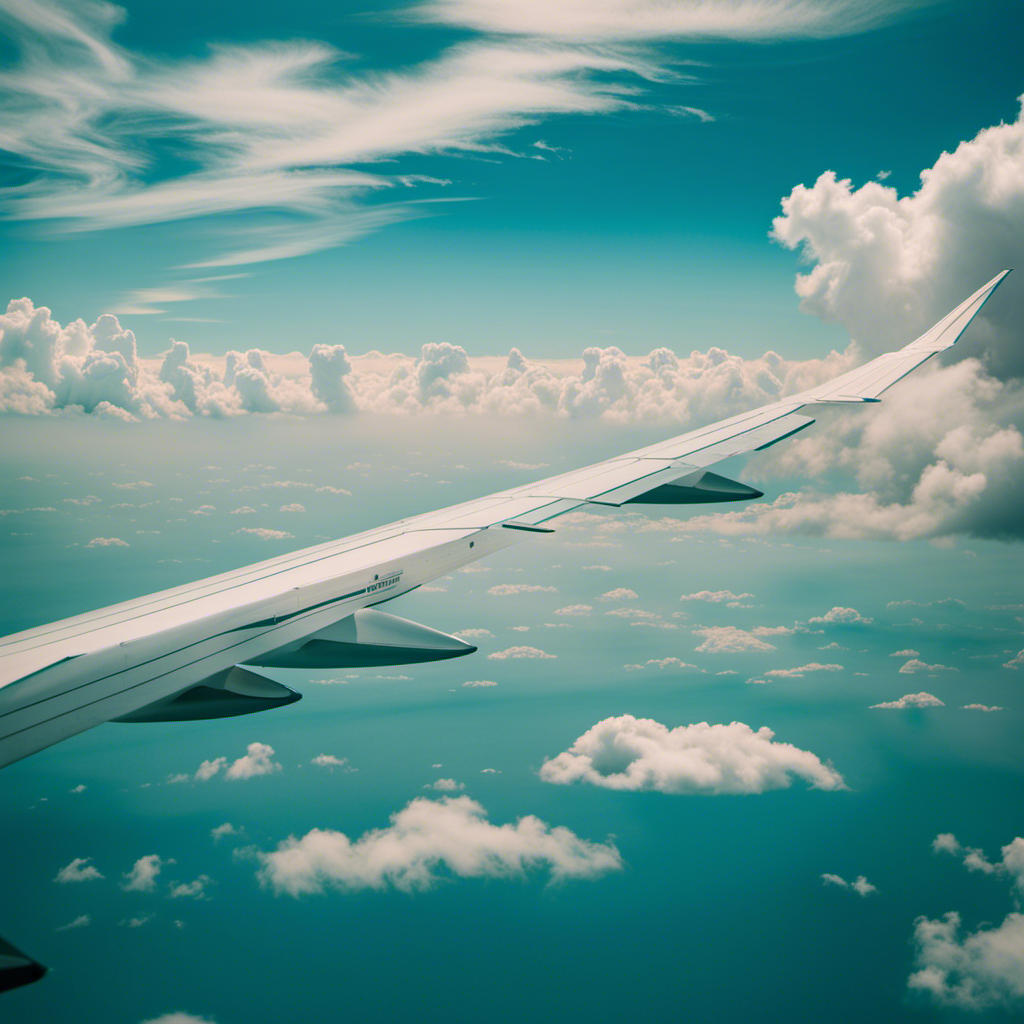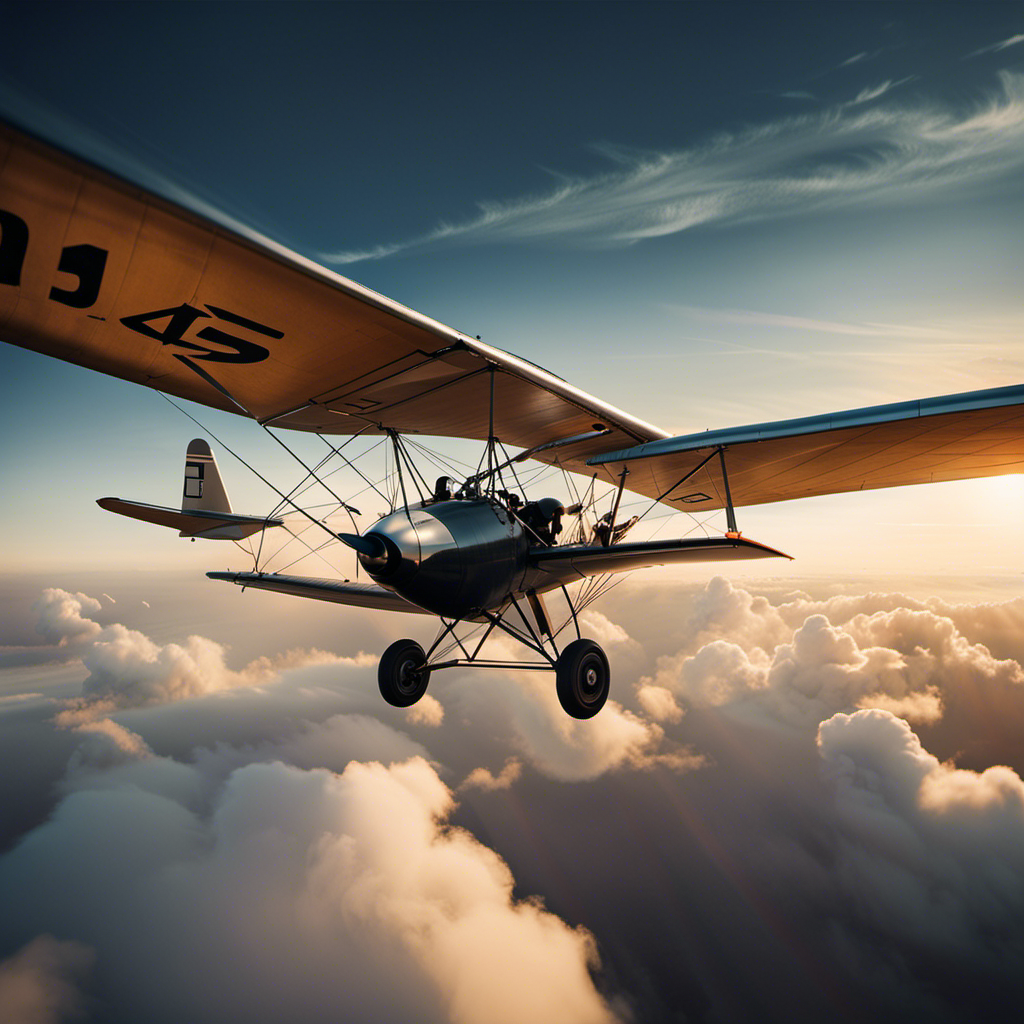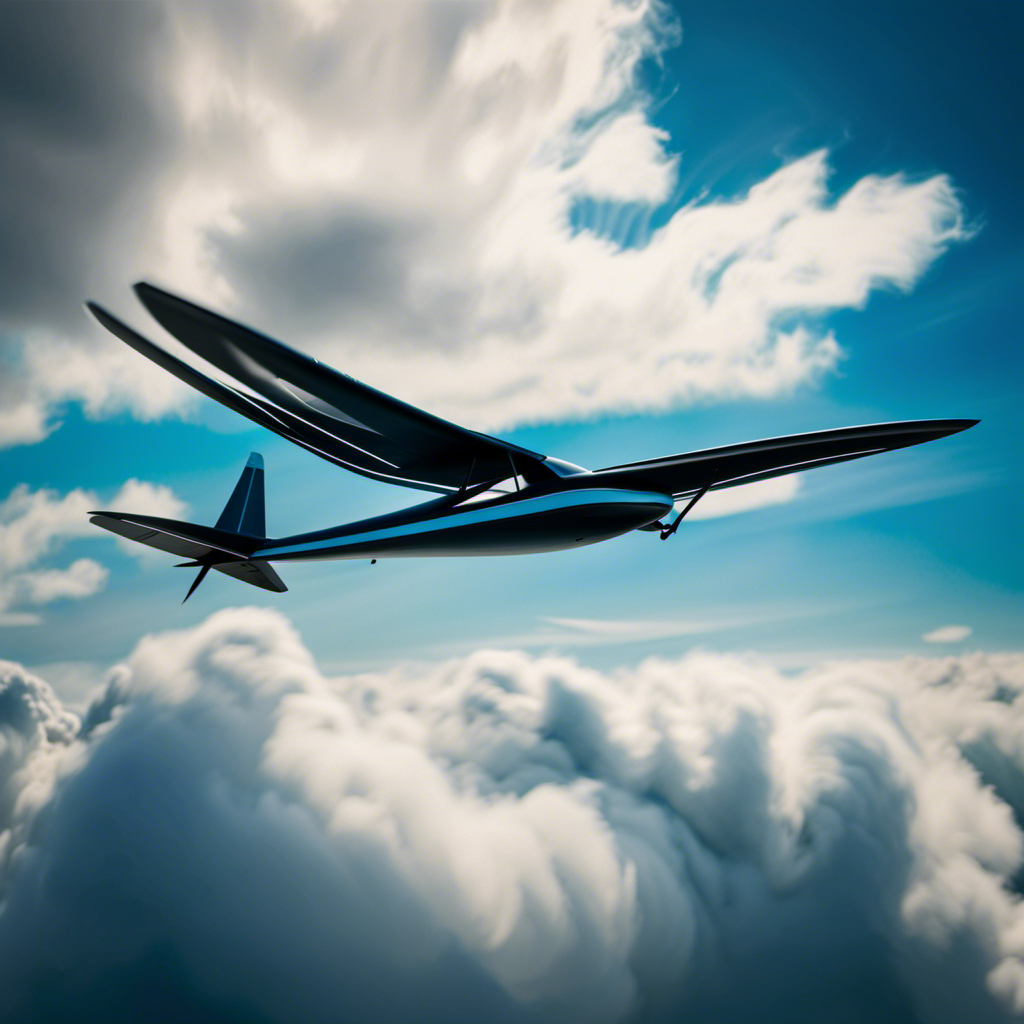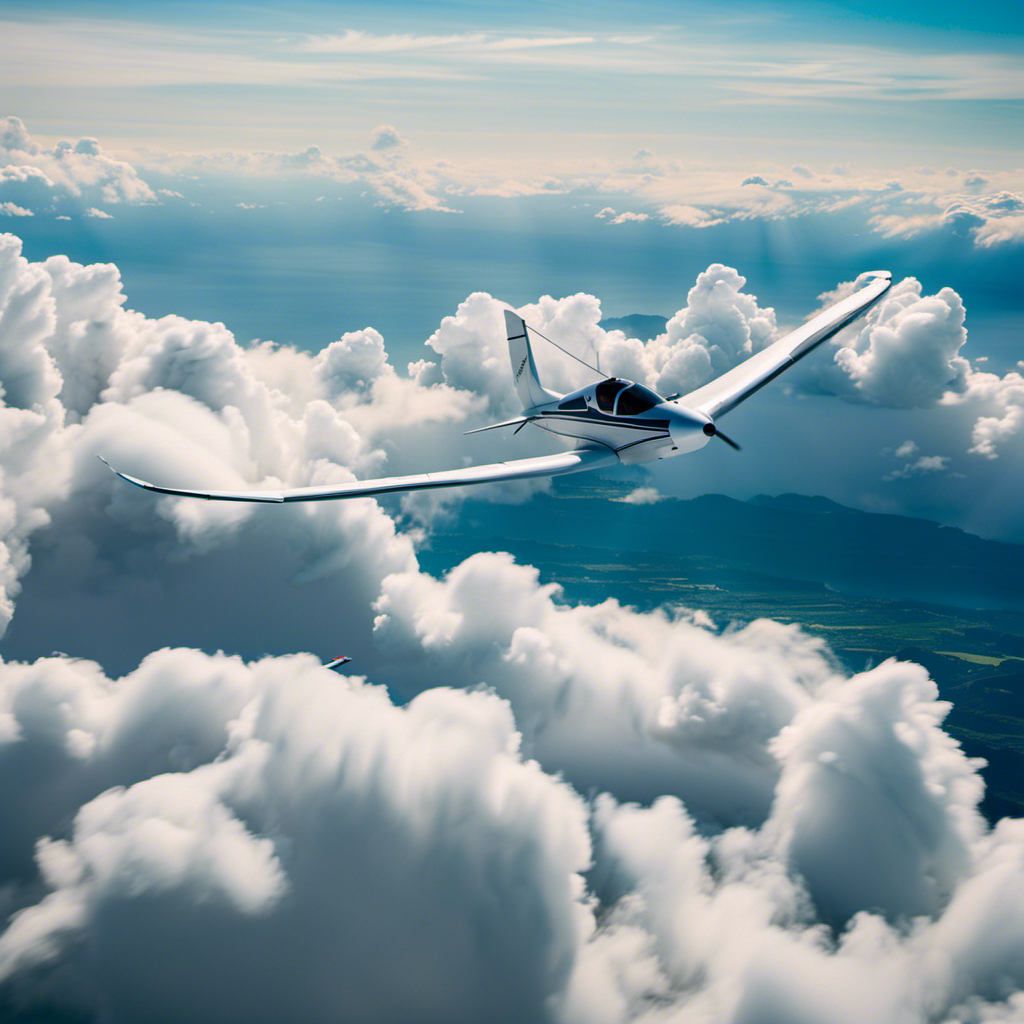Have you ever imagined soaring through the sky, feeling weightless like a feather and liberated like a bird? Well, in the world of gliding, that dream becomes your next thrilling journey.
Picture this: you’re sitting in the cockpit, the tow plane revs its engine, and in a matter of seconds, you’re released into the vast expanse above.
But at what altitude does this magical moment occur? In this article, we’ll delve into the average height at which gliders are set free from the plane, unlocking the secrets of this exhilarating experience.
Key Takeaways
- The average height at which a glider is released from the plane is typically around 2,000 to 3,000 feet above ground level.
- Gliders can be released at lower altitudes for training purposes.
- Glider pilots aim to maximize the altitude gained during release for longer flight durations.
- The pilot’s experience, skill, and understanding of the glider’s weight, balance, and aerodynamics are crucial for safe and successful releases.
Introduction to Gliders and Tow Planes
If you’re wondering how gliders are released from tow planes, it’s actually a pretty fascinating process.
Gliders are aircraft that do not have an engine and rely on external forces, such as gravity and air currents, for propulsion.
Tow planes, on the other hand, are powered aircraft that are specifically designed to tow gliders into the air.
The release of a glider from a tow plane is typically done using a release mechanism located on the tow rope.
This mechanism allows for a controlled separation between the tow plane and the glider, enabling the glider to continue its flight independently.
Understanding this process is crucial to grasp the purpose of releasing gliders and the advantages it offers in terms of soaring and gliding techniques.
The Purpose of Releasing Gliders
To understand why gliders are released, you should know their purpose. Gliders are aircraft that do not have an engine and rely on the natural forces of the atmosphere to stay aloft. They are designed for soaring, which means they can fly for long distances and durations.
Glider pilots often use tow planes to reach higher altitudes where they can find better thermal conditions for soaring. Once the desired altitude is achieved, the glider is released from the tow plane. The purpose of releasing gliders is to allow them to fly freely and utilize the rising air currents to gain altitude and sustain flight.
This release is a crucial step in the mechanics of glider operations, as it marks the transition from being tethered to the tow plane to being an independent aircraft capable of soaring on its own.
The Mechanics of Glider Release
Once the glider reaches the desired altitude, it is released from the tow plane, allowing it to soar independently. This process involves several important steps:
-
Attachment: The glider is securely connected to the tow plane by a tow rope or cable.
-
Climb: The tow plane pulls the glider into the air, gradually ascending to the desired altitude.
-
Release: Once the glider reaches the predetermined altitude, the tow plane releases it, disconnecting the tow rope.
By releasing the glider at the appropriate altitude, it can effectively utilize the upward currents of air, known as thermals, to gain altitude and maintain flight.
These thermals are typically found at specific altitudes, making it crucial for gliders to be released at the right time and place to optimize their flight.
Typical Altitudes for Glider Release
When releasing the glider, you’ll want to aim for altitudes that typically provide optimal thermals for gaining altitude and maintaining flight. These altitudes can vary depending on various factors such as weather conditions, glider type, and pilot preference.
In general, release altitudes for gliders range from 2,000 to 4,000 feet above ground level (AGL). This range ensures that the glider has enough altitude to safely maneuver and find rising air currents. However, it’s important to note that higher release altitudes may be necessary in regions with less favorable thermal activity or when flying in mountainous areas where the terrain can influence the availability of thermals.
Considering these factors affecting release altitude will help you make informed decisions and ensure a successful glider release.
Factors Affecting Release Altitude
Factors such as weather conditions, glider type, and pilot preference can influence the optimal release altitude for a glider. The release altitude determines the initial height from which the glider will begin its flight. Consider the following factors that can affect the decision of the release altitude:
- Weather conditions: Wind speed, direction, and turbulence can impact the glider’s performance and stability during release.
- Glider type: Different glider designs have varying optimal release altitudes based on their aerodynamic characteristics.
- Pilot preference: Some pilots may have personal preferences or strategies that dictate the release altitude they find most effective.
- Airspace restrictions: Depending on the location and airspace regulations, there may be minimum or maximum release altitudes specified.
- Flight plan: The desired flight path or route may influence the release altitude to ensure the glider’s trajectory aligns with the intended destination.
Understanding these factors is crucial for determining the most suitable release altitude for a glider. Now, let’s delve into the safety considerations involved in glider release.
Safety Considerations in Glider Release
In order to ensure the safety of the glider release process, there are several considerations that need to be taken into account. One of the main factors is the release altitude, which is determined by various factors such as the type of glider, the weather conditions, and the experience of the pilot.
To give you a better understanding of these safety considerations, let’s take a look at the following table:
| Safety Consideration | Description |
|---|---|
| Glider Weight | The weight of the glider plays a crucial role in determining the release altitude. Heavier gliders require a higher release altitude to ensure a safe separation from the tow plane. |
| Weather Conditions | Adverse weather conditions such as strong winds or turbulence can affect the release altitude. It is important to wait for suitable weather conditions before initiating the release process. |
| Pilot Experience | The experience level of the pilot also influences the release altitude. More experienced pilots are able to handle glider release at lower altitudes, while less experienced pilots may require higher release altitudes for added safety. |
| Aircraft Performance and Limitations | The performance characteristics and limitations of the tow plane and glider must be taken into consideration when determining the release altitude. This ensures that both aircraft are operating within their safe operating parameters. |
The Role of the Pilot in Glider Release
The pilot’s experience level greatly influences the success of the glider release process. As the pilot, you play a crucial role in ensuring a safe and efficient release of the glider from the towplane. Your experience and skill in handling the aircraft during this critical phase are key to a successful release. It is important to have a thorough understanding of the glider’s weight, balance, and aerodynamic characteristics, as well as the proper techniques for releasing the towline.
Additionally, your ability to communicate effectively with the towplane pilot and respond quickly to any unexpected situations is vital. By applying your knowledge and expertise, you can ensure a smooth and precise glider release.
Transitioning into the next section, let’s now explore the challenges and techniques involved in the glider release process.
Challenges and Techniques in Glider Release
Now let’s dive into the challenges and techniques you’ll encounter during the glider release process. When releasing a glider from a tow plane, there are several factors to consider to ensure a smooth and safe transition. One of the main challenges is maintaining the proper release altitude. This requires precise coordination between the tow pilot and the glider pilot. Another challenge is managing the release speed and angle to ensure a clean separation without any yaw or roll. To help you understand these challenges better, here is a table showcasing the techniques and their corresponding challenges:
| Technique | Challenge |
|---|---|
| Altitude control | Maintaining the proper release altitude |
| Speed control | Managing the release speed |
| Angle control | Achieving a clean separation without any yaw or roll |
Record-Breaking Glider Release Altitudes
To achieve record-breaking glider release altitudes, you’ll need to push yourself to new heights and harness the power of precise altitude control. Here are three key techniques to help you reach those lofty goals:
-
Optimize your launch technique: By carefully coordinating with your tow pilot and adjusting your aircraft’s pitch and power settings, you can maximize the initial climb rate and gain more altitude during the release.
-
Utilize thermals and ridge lift: Identifying and exploiting natural sources of lift, such as thermals or air currents along ridges, can significantly increase your glider’s release altitude. Understanding weather patterns and using advanced instruments can help you locate these lifting areas more effectively.
-
Upgrade your glider’s performance: Investing in a high-performance glider with advanced aerodynamic features and lightweight construction can enhance your ability to reach greater release altitudes.
By implementing these techniques, you’ll be well on your way to achieving record-breaking glider release altitudes.
Looking towards the future, innovative technologies and advancements in glider release technology promise even greater possibilities for soaring to new heights.
Future Innovations in Glider Release Technology
Imagine soaring through the sky with ease, effortlessly reaching higher altitudes thanks to cutting-edge advancements in glider release technology.
The future of glider release is promising, with ongoing research and innovation focused on maximizing efficiency and safety. Engineers are developing new systems that allow gliders to be released from planes at even greater heights, enabling longer and more thrilling flights.
These advancements involve improvements in aircraft design, release mechanisms, and aerodynamics. The goal is to optimize the release process to ensure a smooth and stable transition from the plane to the glider, minimizing any potential risks or disruptions.
As technology continues to evolve, glider enthusiasts can look forward to pushing the boundaries of altitude and experiencing the exhilaration of flying at new heights.
Frequently Asked Questions
How long does it typically take for a glider to reach its release altitude?
Typically, it takes a glider around 20-30 minutes to reach its release altitude. This allows the glider to gain enough height to safely detach from the plane and begin its independent flight.
Are there any specific regulations or guidelines regarding the minimum release altitude for gliders?
There are no specific regulations or guidelines regarding the minimum release altitude for gliders. It’s almost as if they’re free to release whenever and wherever they please. How thrilling!
Can gliders be released at different altitudes depending on the weather conditions?
Yes, gliders can be released at different altitudes depending on weather conditions. The decision is based on factors such as wind speed, thermals, and cloud cover, ensuring a safe and efficient flight.
Are there any specific procedures that need to be followed during the glider release process?
During the glider release process, specific procedures must be followed. These include safety checks, communication between the pilot and the glider operator, and ensuring proper timing and angle for a successful release.
What are the potential risks or challenges associated with glider release and how are they mitigated?
Potential risks or challenges associated with glider release include improper release timing, release line entanglement, and stability issues. These risks are mitigated through thorough pre-flight checks, proper training, and adherence to established release procedures.
Conclusion
In conclusion, the average height at which a glider is released from a tow plane varies depending on various factors such as wind conditions, weight of the glider, and the pilot’s preference.
However, it is generally observed that gliders are released at altitudes ranging from 2,000 to 3,000 feet above ground level.
One interesting statistic to note is that the current world record for the highest glider release altitude stands at an astounding 49,009 feet, achieved by Perlan 2 glider in 2018.
This remarkable feat demonstrates the continuous pursuit of pushing the boundaries of glider release technology.
With a heart that soars as high as the skies, Aria, affectionately known as “Skylark,” is the driving force behind Soaring Skyways. Her journey into the gliding world began as a young dreamer gazing up at the soaring birds, yearning to experience the weightlessness and freedom they embodied. With years of experience both in the cockpit and behind the scenes, Aria’s commitment to the gliding community is unwavering.










